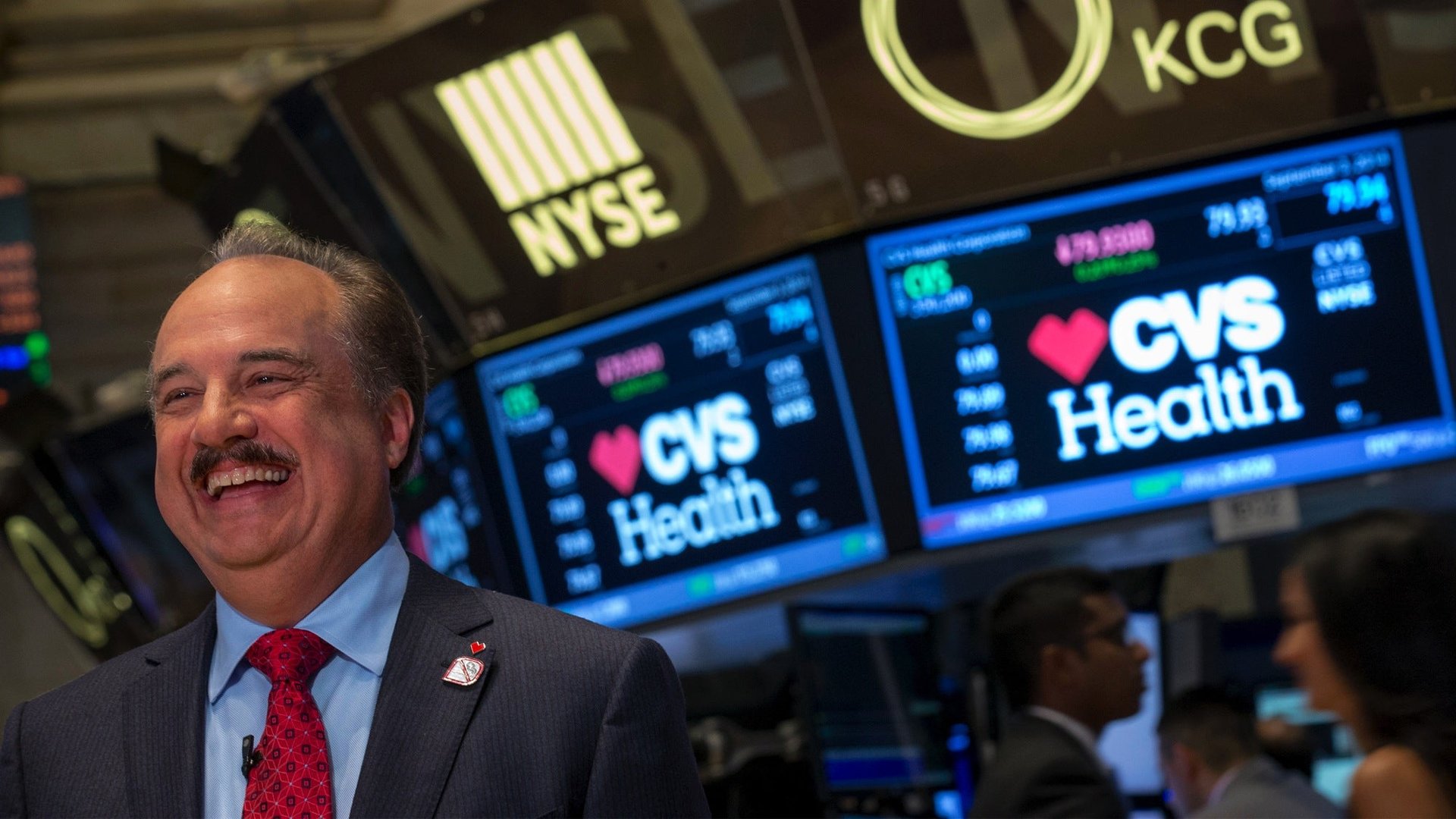The neighborhood CVS you grew up with is dead. It’s now part of Big Pharma
As US retail traffic and consumer spending floundered well past the recession, drugstore chain CVS faced a choice: It could either expand the front part of its store and go deeper into the retail products that defined its original 1963 name ‘Community Value Store,’ or build up the back, which housed its pharmacy and health-care business.


As US retail traffic and consumer spending floundered well past the recession, drugstore chain CVS faced a choice: It could either expand the front part of its store and go deeper into the retail products that defined its original 1963 name ‘Community Value Store,’ or build up the back, which housed its pharmacy and health-care business.
So it went where the money was: health care.
In the last year, CVS has given up cigarette sales (and the $2 billion in yearly revenue that came with them). It renamed the company CVS Health—marking the change by ringing the opening bell at the New York Stock Exchange while wearing lapel pins featuring a cigarette with a red “no” sign stamped over it. The company announced a $13 billion deal in May to acquire Omnicare, which distributes prescription drugs to long-term-care centers, followed by a $1.9 billion deal to buy Target’s pharmacy and clinic business.
Now CVS, which already runs 1,000 primary-care clinics, will operate clinics and pharmacies inside 1,660 Target stores under its own name—putting a fine point on how little traction retailers like Target and Walmart were able to get with their own health-care businesses.
The moves are paying off. Pharmacy sales, excluding newly opened and closed stores, increased by 4.1% in the second quarter, while retail sales declined 7.8%. A big portion of the decline had to do with the loss of tobacco revenue, but even excluding cigarettes the company said retail sales would have been flat.
CVS now derives a far greater part of its business from health care than from the retail goods. Last year, it took in 57% of its revenue from its pharmacy-services business, which includes pharmacy benefit plans, Medicare Part D services, 24 retail specialty pharmacies, 11 mail-order pharmacies, and 85 outpatient services centers. That doesn’t even include the money it takes in from sales of prescription and over-the-counter drugs, which the company accounts for in its retail business.
The company’s shift provides a case study on why it’s better to be a health-care company than a retailer today. The company’s calculation also tells a bigger story about where the US economy is going and where everyday Americans are directing their dollars.
While US consumer spending on clothing and footwear rose 32% from 2002 to 2014, spending on pharmaceutical and other medical products soared 114%, according to the US Bureau of Economic Analysis. During that time, spending on health care rose by 80%, according to the BEA.
The massive increase in health-care spending is driven in part by the Affordable Care Act, which has led to a larger number of people with insurance coverage to pay for more prescription drugs, medical products, and doctor visits. But it’s also helped along by the aging of the Baby Boomers and the increasingly active role Americans are playing in their own health-care decisions.
As CVS expands across the health-care universe, it’s hoping it can use its scale and wider service offerings to reach consumers at lower costs than its legacy competitors. “We can manage the consumer, the patient through the continuum of their health-care lifecycle,” CEO Larry Merlo said on a conference call last week.
And unlike retail spending, which goes up and down with the economy, health-care spending can ride out an economic downturn.
“The bottom line is that CVS can save money for its clients and a tougher macro-economic climate could actually drive even more business to the company,” wrote Wolfe Research analyst Scott Mushkin in a recent research note.